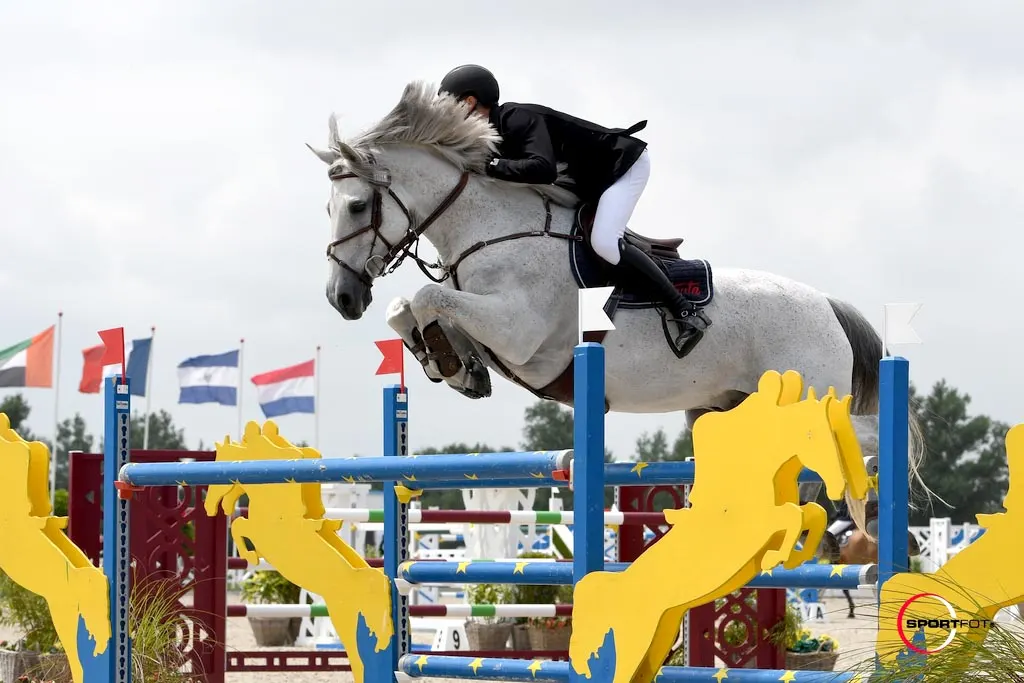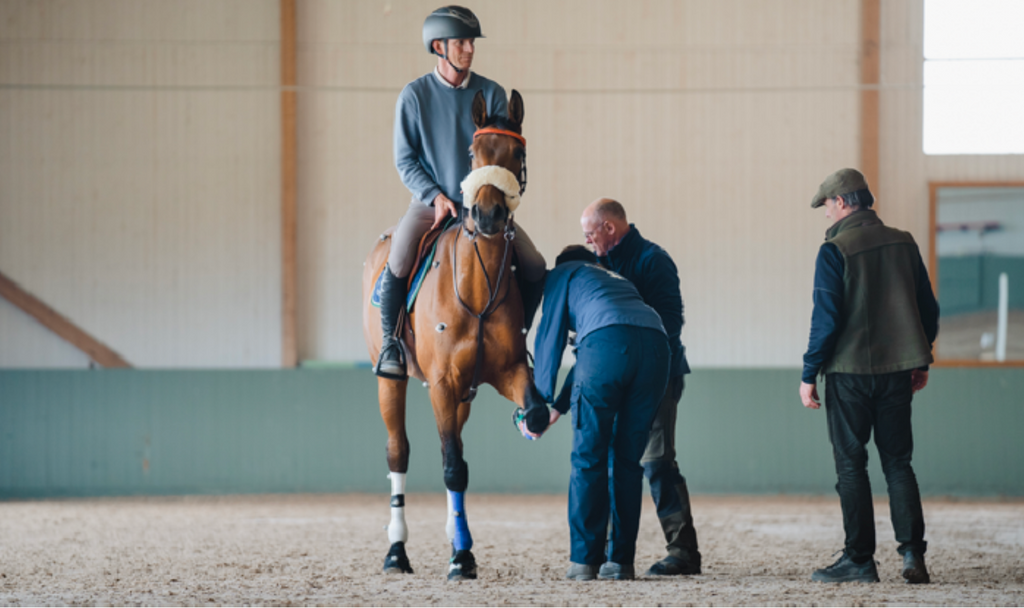
Swedish Equine Scientist Calls for Alternatives to Traditional Horseshoes
Share
Swedish equine scientist says alternatives to horseshoes are the future, after preliminary results from a new study conducted by the Swedish Agricultural University SLU, shows that traditional iron horseshoes inhibit normal hoof function.
By Helle Maigaard Erhardsen
A brand new Swedish barefoot study has revealed that traditional iron horseshoes inhibit vital functions of the hoof such as the hoof’s ability to contract and expand. These findings has led Professor Lars Roepstorff, the scientist in charge of the study, to call for alternative ways to protect horse hooves in the future.
“One would like to find alternatives to iron shoes that can handle the shoe's most important functions; wear protection, anti-slip protection and protection against point loads, but at the same time allow a normal function of the hoof. I think that is the future,” Lars Roepstorff said to Agria Djurförsäkring, who has partnered in the research project.
Traditionally, iron horseshoes have been used for protective purposes, but as the new barefoot study has shown, iron shoes also come with undesirable side effects, which is not only due to the rigid iron shoe itself but also from the fixing of it onto the hoof with nails.
For decades the interest in getting rid of the iron horseshoes and going barefoot instead has increased, and that without much scientific evidence to explain why the horses were performing so well without the traditional horseshoes. Lately, a growing number of elite riders are also successfully going barefoot, and that’s what’s sparked the new research project.

Professor Lars Roepstorff and his team conducting research with the help from Peder Fredricson, who is one of the many professional riders that uses hoof boots to protect their horse’s feet instead of horseshoes.
Elite Horse Riders are Transitioning their Horses from Shod to Barefoot
Swedish Equine veterinarian Staffan Lidbeck was intrigued by how his friend and Olympic Gold medalist Peder Fredricson was having such success and less injuries since he had taken his horses barefoot. He contacted Professor Lars Roepstorff to ask if he could scientifically explain the success, and it turned out that Peder had also contacted Roepstorff with the same query. With supporting funds from Agria Animal Insurance, who were also interested in ways to reduce lameness in horses, the project became a reality.
“For me it has been obvious to put shoes on the horses. I've probably had the prejudice that there is a certain category of riders who have their horses barefoot and that it doesn't work at top level. That the professionals would take off their horse’s shoes was somehow not on the map,” Staffan Lidbeck said to Agria Djurförsäkring.
“It was brave of Peder to take this step, also with his very best horses. He said something wise, that I have thought about a lot; That you often hear talk about which horses can go barefoot and that it is not for everyone. But Peder wants to turn it around and ask; Who can't be ridden without shoes? We are so enamored that iron shoes on horses are the norm. Instead, perhaps we should ask ourselves in which situations and for which activities horses need the shoes,” veterinarian Staffan Lidbeck said.
In the following, we will look into how you can protect your horse’s feet without the restrictions of nailed on iron shoes, and why hoof boots are the perfect alternative to the traditional iron horseshoe.

According to vet Staffan Lidbeck, top level riders are breaking down the prejudice that only a certain type of people have their horses barefoot. Pictured is South African Amelia Campbell-Horne jumping barefoot in Scoot Boots.
Protective Performance Hoof Boots can replace Iron Horseshoes
Despite the many advantages of taking your horse barefoot, there are still instances where your horse’s feet require extra protection. As Professor Lars Roepstorff points out, the main function of the traditional iron horseshoe is to prevent excessive wear of the hooves, to distribute the load over a larger surface in case of point pressure - for example if the horse steps on a stone - and to provide the horse with a better grip on slippery surfaces, which is achieved by adding studs under the shoes.
Hoof boots such as Scoot Boots, are lightweight, flexible, and very easy to put on the horse when needed. Scoot Boots improve the barefoot horse’s shock absorbing properties and have been found to encourage the desired heel first landings. They provide excellent wear protection of the horse’s hooves on all surfaces.
As opposed to iron horseshoes, which don't cover the sensitive sole of the hoof, Scoot Boots cover and protect the entire surface under the hoof, which as a result provide superior point pressure protection. As such, Scoot Boots protects against bruising and makes the horse move confidently across all types of terrain, whether that be gravel, hard asphalt or rocky trails.
Hoof boots from Scoot Boots have been made for performance and the tread itself provides extraordinary grip on slippery surfaces. When extra grip is needed, such as in icy weather conditions or when doing high speed showjumping or cross country on wet, muddy grass, studs can be applied directly under the hoof boot providing the same, enhanced grip as studded horseshoes.
 Scoot Boots allow the hoof to function completely normal with no disturbance to blood flow or hoof expansion and contraction, whilst providing superior hoof protection compared to horseshoes.
Scoot Boots allow the hoof to function completely normal with no disturbance to blood flow or hoof expansion and contraction, whilst providing superior hoof protection compared to horseshoes.
Building a Supportive Barefoot Community
The team at Scoot Boot believe passionately in the barefoot horse and strive to build a supportive community of barefoot horse lovers.
Find more information about using Scoot Boots here.
|
About the author
Helle Maigaard Erhardsen is an investigative journalist specialising in environmental issues. Her devotion to the outdoors includes a life long passion for horses of which she has three: Pannigan - an off-the-track Thoroughbred, Luka - a Paint Quarter Horse/Arab and little Audrey - a Shetland pony, who are all bitless and barefoot. Helle is born in Denmark, where she graduated from the Danish School of Media and Journalism in 2015. Her work is characterised by comprehensive research and she was nominated for the special media award Bording Prisen for her investigative reporting with the newspaper Ing.dk. She later obtained a Master’s degree in Journalism, Media and Communication from UTAS, when she relocated to Tasmania. |

